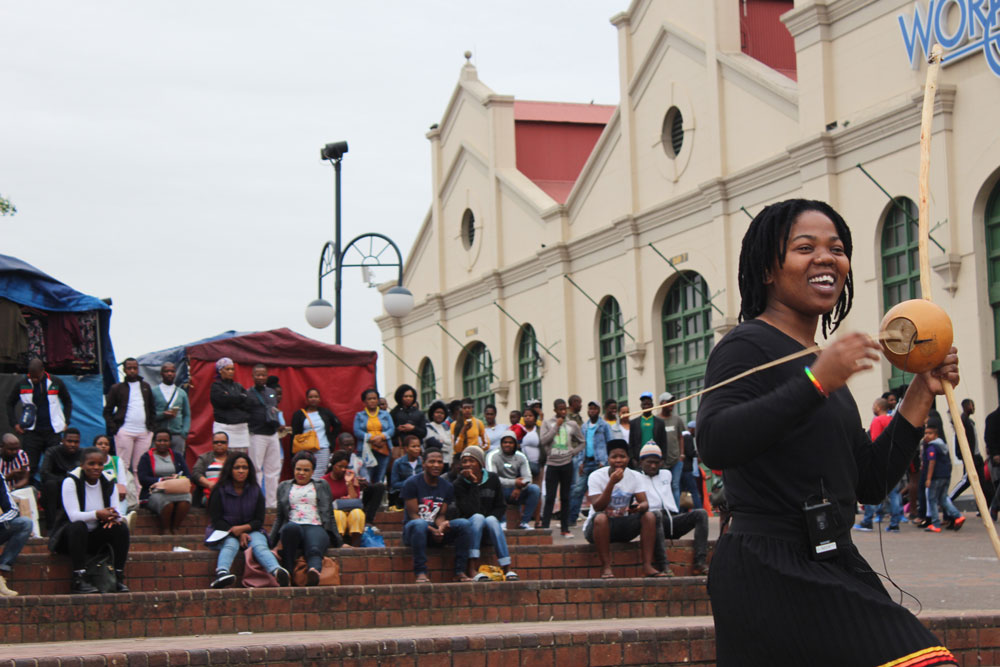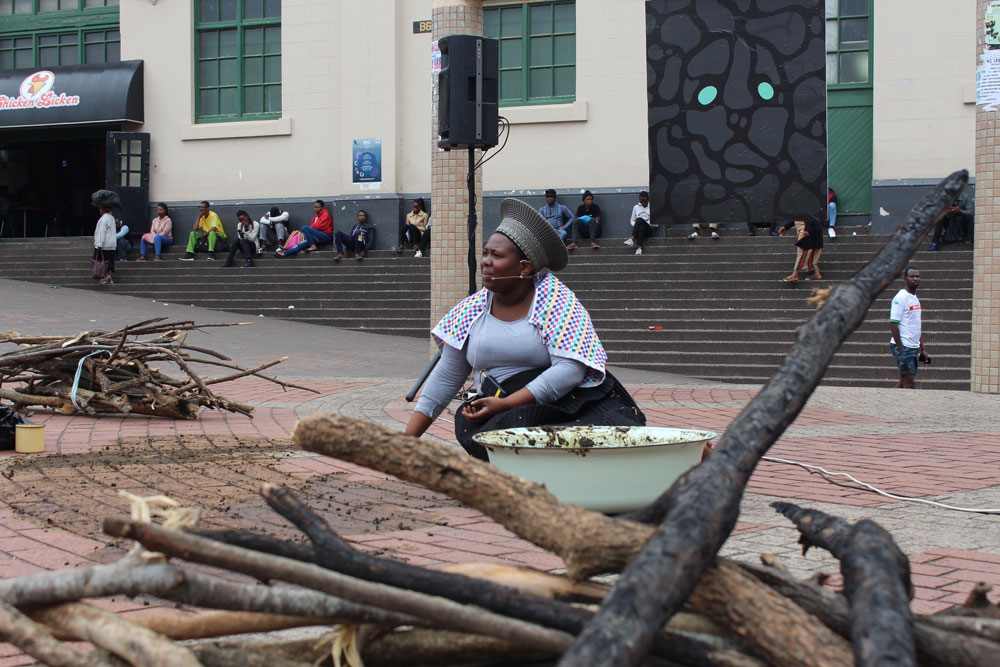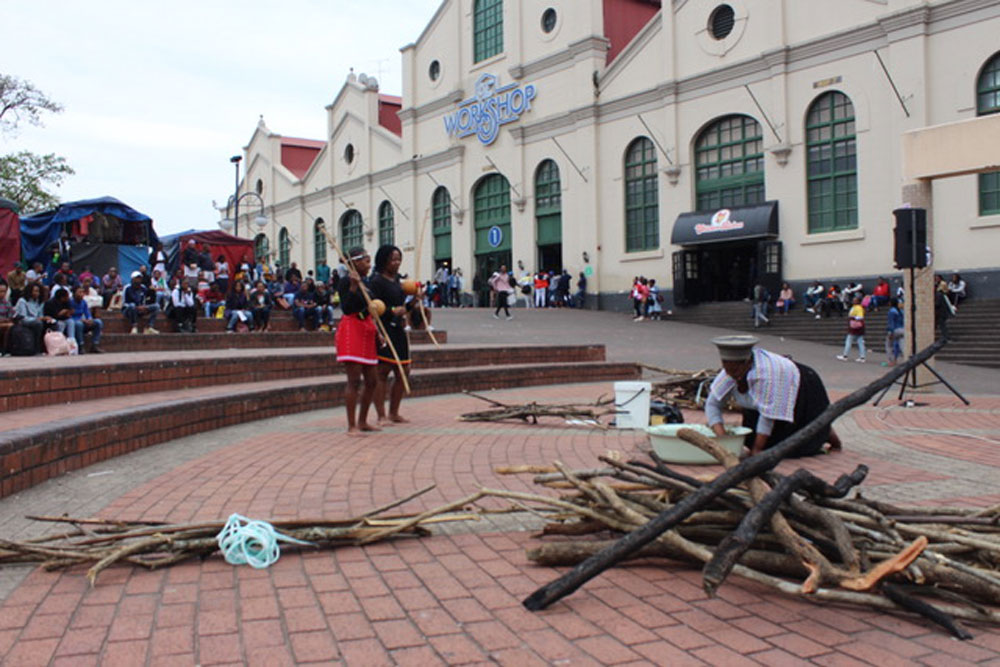
Project profile: Umongo we dolobha, The Marrow of the City
Russel Hlongwane, Durban, South Africa
A combination of traditional performance and a piece of ambient literature which leads audiences on an audio walk through urban space, reflecting on identity, ownership and the legacy they intend to leave behind for generations in the future.
All of South Africa’s cities were built during colonial and apartheid South Africa, serving a white minority. Since the country’s first democratic election in 1994, cities like Durban now need to serve the entire population but much of its black and brown subjects feel no sense of agency over their city.
For black South Africans who arrived in cities as cheap labour, the city is viewed as an ”extractive beast’’ which needs to be tamed. Umongo we dolobha: The Marrow of the City sought to reflect the city back to this generation, a mirror of themselves in the city. The piece took place at The Workshop Amphitheatre in the centre of the city occupied by a colonial building which is the old train station built in 1860.
The project involved two stages. Firstly, a performance involving traditional music, dance, song, artefacts and rituals transformed the site into a ‘temporary memorial’ to the undocumented generations, reclaiming a ‘centre of power’ in the middle of the city. The performance served as a provocation to engage audiences with the subject matter and to fuse city change discourse with artistic practice in a city where these two fields seldom meet.
Stories and responses were then collected and used to create a piece of ambient literature in the local language of isiZulu, crossing the chasm that exists between tradition and technology. A guided audio walk featuring citizen’s voices and city soundscapes narrated the history of Durban and its black subjects as it encouraged the listener to navigate the surrounding urban spaces. Audiences were asked to reflect on their relationship with their surroundings, urged to claim agency over the city and consider the legacy they intend to leave behind for generations in the future.
We interviewed Russel about his work and he elaborated on the South African cultural context:
“Just at the break of democracy, South Africa had received a lot of support and attention from mostly Dutch, British and American cultural funds that were looking at freedom of expression and cultural diversity from a development mandate.
Coming into 2009 to 2014 there has been a fairly strong movement away from arts as development into art as economy…the UK being at the forefront of this…when Europe found the mechanisms and instruments to talk about the creative economy, there was a knock-on effect into the South African space. So, I think the South African government understands that there’s this fourth industrial revolution, and somehow they have to talk about it to drum up votes, but they haven’t invested in the infrastructure – both hard and soft infrastructure – to enable this fourth industrial revolution. There’s a more deliberate and tangible set of outcomes and outputs from programmes that are supported by the Europeans as opposed to those supported by the government.
South Africa is a fairly unique country in the sense that we’re one of the few countries on the continent, definitely Sub-Saharan, with a cultural fund that is fairly sizeable and has its own ministry and is budgeted for every year. So, what this means for South African is that inasmuch as we can complain that there isn’t a creative economy supported by the government…there certainly is a creative economy in South Africa because there’s a strong political infrastructure and framework which allows trade and commerce to happen across the region, across borders and internationally…”





